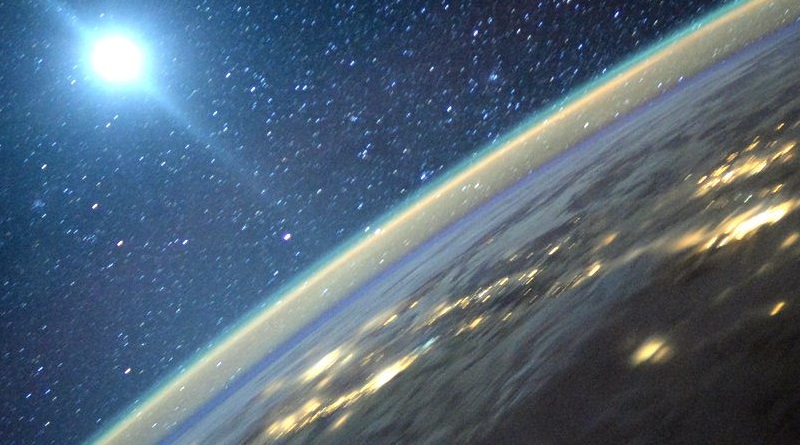ISS Operations Update – October 9, 2015
Experiments:
SPHERES [SPHERES stands for Synchronized Position Hold, Engage, Reorient, Experimental Satellites and involves two satellites that are used inside the space station to provide a miniature testbed to study maneuvering capabilities and spacecraft measurement systems. The Vertigo experiment looks at 3D navigation systems.]
MagVector [The MagVector study is an interesting experiment that will expose a variable electrical conductor to Earth’s magnetic field to study the interaction between the conductor and the magnetic field in a range of different environments using extremely sensitive magnetic sensors installed around the conductor. The experiment will be installed in the European Drawer Rack that will provide a cooled vacuum to have the experiment take place in vacuum conditions. Earth’s magnetic field vector and overall field strength is measured in parallel to provide data for comparisons.]
IMAX Imagery Downlink
Journals [Electronic journals will be kept by the crew members to allow psychologists to study behavioral issues that are associated with the isolation and confinement over long-duration space missions. Journals from 6-month ISS mission have amounted to a total of 1,100 written pages, but no data beyond those six months is available making this an interesting opportunity to study the impact of isolation in the confinements of ISS over a longer period.]
Sleep ISS-12 [The ISS-12 experiment monitors the ambient light exposure and crew member activity and collects data on the subjective evaluation of sleep and alertness. Ambient light and activity are monitored via a wrist-worn actiwatch that delivers actiwatch spectrums that are put through bio-mathematical models of sleep and light to predict circadian phase. Sleep logs will be kept by crew members as a subjective assessment of sleep quality and duration. It is hoped that this investigation can deliver requirements for lighting, sleep-shifting protocols and workloads for future space exploration missions.]
Space Headaches Questionnaire
EXPOSE-R Data Transfer [The EXPOSE payload platform was developed by the European Space Agency to conduct astrobiology studies by exposing samples and experiments to the space environment – mounting the platforms on the exterior of ISS for an extended period of time before retrieving them for return to Earth. The effects of the space environment (increased UV exposure, cosmic radiation, microgravity, atomic oxygen, temperature variations) on organic matter and organisms have been heavily studied via space-based experiments and in ground-based laboratory simulations. These studies are performed to better understand the role of interstellar, cometary and planetary chemistry with respect to prebiotic molecules leading to the formation and evolution of life on Earth, also assessing the possibility of its distribution in space. EXPOSE experiments in the past exposed solid materials, gas mixtures, and biological samples to the space environment to simulate conditions on Mars and comets. The experiment module hosts four experiments – BIOMEX, BOSS, PSS and Biochip.]
Matryoshka-R – Dosimeter Readings [Matryoshka-R consists of a number of radiation dosimeters that are set up inside the space station to assess radiation exposure of the crew relative to ISS position in its orbit and shielding provided by the modules.]
KPT-10 – Kulonovskiy Kristall Hardware Setup & Experiment Ops [The KPT-10 telescience study examines “dynamic and structural characteristics of the Coulomb systems formed by charged dispersed diamagnetic macroparticles in a magnetic field (trap), investigating the following processes onboard the ISS RS (Russian Segment): condensed dust media, Coulomb crystals, and formation of Coulomb liquids due to charged macroparticles,” the NASA experiment overview notes.]
Maintenance/Systems:
Nominal Inspections/Servicing Tasks (Morning Inspection, Caution & Warning Panel Check, Sozh System Maintenance) (Russian Crew)
NanoRacks Cubesat Deployer Troubleshooting – Additional attempts were made to cycle the deployer latches to release the final two Flock satellites including a robotic arm jolt to free the stuck latches. The satellites remained inside the deployer and teams are evaluating options.
Node 1 Nadir Power Connections for power transfer to visiting vehicles.
Air Sampling in Service Module
Russian Laptop Software Upgrade
Treatment of surfaces on Russian Segment with Fungistat
Replacement of Lighting Assemblies in Pirs
Other Activities:
HAM radio session
Weekly Tagup with Russian Mission Control Team
Progress M-29M Cargo Transfers

